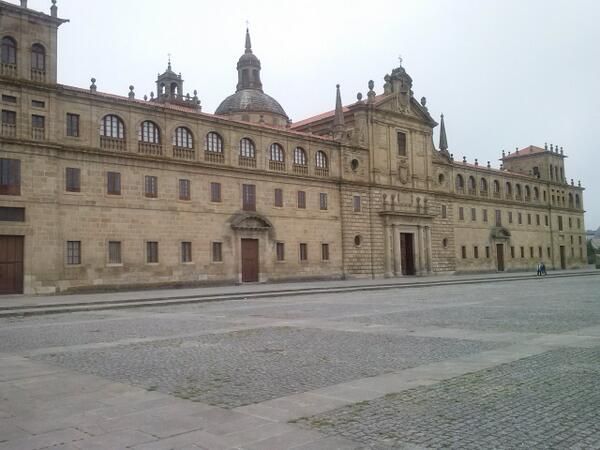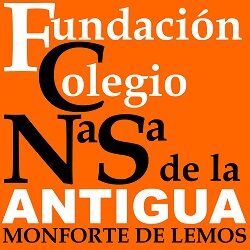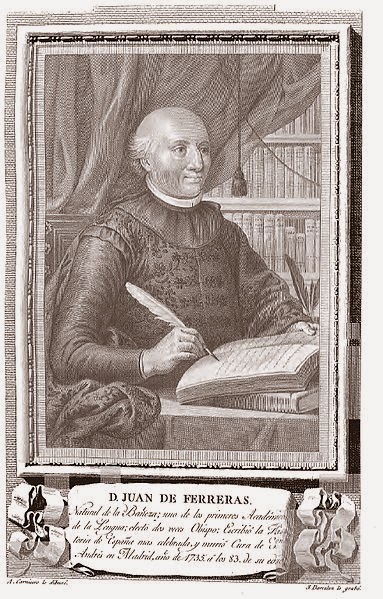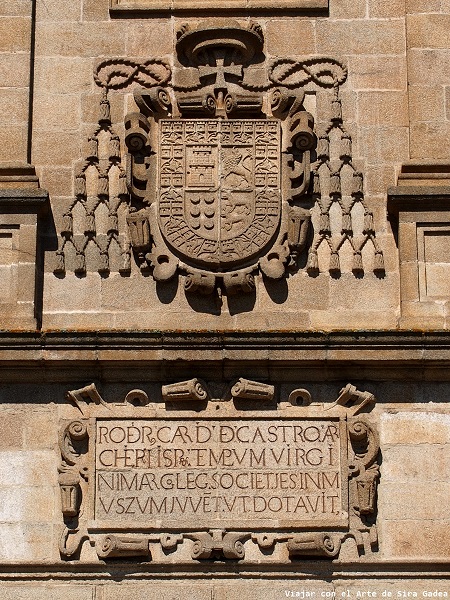This afternoon, after the celebration of the Passion and Death of the Lord that will begin at 7:00 p.m., in our church of the College of the Cardinal, will take place if the time allows it, as it is programmed, the procession of the Dolorosa Virgin , that will cross the streets of Monforte.
A magnificent element … half-hidden.
Miguel Angel Feal, scholar of the original traces of our building, dealing with the dome, affirms: “Like El Escorial and many other Spanish churches of its time, they are already of Latin cross, rectangular, or long basilical nave covered with a dome in its transept or corresponding part, the church of the Monforte Company, does not offer to those who approach its facade a complete view of this important element of its architecture. Its consequence is inherent to the depth of its single ship. The origin of the monfortino type is the Italian of the Counter-Reformation that tried to reconcile the church of a deep and living hall with the dome used in the manner of a dome in the medieval Spanish and Languedocian churches. The splendid Monforte dome is characteristic of these models.
Inside the temple fulfills its function perfectly.
In its exterior it can not be contemplated in all its splendor, unless it is from very far away, a point from which it receives its complete proportions “.

From a distance you can see the dome in all its splendor

Illustrious student: Juan de Ferreras
From Jewish origins, he therefore had to study in many universities and live in different cities and was never able to qualify for the positions that corresponded to his capacity, for which he demanded a statute of cleanliness of blood. He studied at La Bañeza and at the Colegio de Jesús de Monforte de Lemos; studied philosophy with the Dominican friars of the monastery of Trianos de Villamol and theology in Valladolid and Salamanca. In 1676 he was parish priest of Talavera de la Reina, in 1681 of Albares and in 1685 of Camarma de Esteruelas; destined to the capital, in 1697 it took charge of the church of San Pedro and in 1701 of the one of San Andres. He was confessor of Cardinal Portocarrero, synodal examiner of the archbishopric of Madrid and qualifier of the council of the Inquisition; Bishop Elect of Monopoli and Zamora, he resigned from both dioceses, probably because of his Jewish roots.
In 1713 he was one of the founders of the Royal Spanish Academy and in 1715 he was appointed senior librarian of the newly opened Royal Library, replacing the late Gabriel Álvarez de Toledo, a job he held until his death; He assembled to form the fund of what would be the future National Library, a great number of incunabula, rare and forbidden, many of them obtained abroad by mocking the census hand of the Inquisition, of which he himself was a part.
He left written a work in 16 volumes, Synopsis historical chronologica of Spain (1700-1727), in which he tells the history of Spain until the end of the sixteenth century; was translated into full French enriched with historical and critical notes under the title of Histoire Générale d’Espagne …
Blas Nasarre published an historical Elogio de Don Juan de Ferreras (Madrid: Printing of the Royal Spanish Academy, 1735).
San Francisco de Borja in your place
Today, after its recent restoration, the painting of San Francisco de Borja has been installed in its place, in the reredos of the Magi, at the top. As we will remember, this painting is dated 1666 and is by anonymous author. Its state of deterioration was very great as can be seen in our entry on March 27, where we published a comparison of the before and after the restoration. The restoration has been carried out by Fr. Javier Agudo, Piarist and currently manager of the CNSdlA Foundation.
That we can enjoy this work, which refers us precisely to the beginnings of the Foundation of the College of the Cardinal and to the third General of the Francisco de Borja Company family through the mother of Cardinal Rodrigo de Castro.
Illustrious students: Vicente Vázquez Queipo de Llano.
He was born in the town of Samos on February 17, 1804, in the pazo de Lusío, in the bosom of a wealthy family. He began his studies in his own house and continued them in the Jesuits of Monforte de Lemos. In 1820 he entered the University of Valladolid, studying Law and at the same time, Mathematics and Experimental Sciences. He obtained the bachelor’s degree in Law and Philosophy and later the bachelor’s degree and the doctorate in Law.
He obtained by opposition a chair of Experimental Physics and Chemistry in 1826. Subsequently traveled to complete his mathematical and physical training in Paris (1829), entering the Central School of Arts and Manufactures in Paris where he was appointed Assistant Professor of Physics. He returned in the summer of 1832 and settled in Madrid, where he had a family (José María Queipo de Llano and Ruiz de Saravia, VII count of Toreno, was his uncle). In 1833 he was assigned to Cuba as Fiscal of the Treasury, where he remained until 1846, the year he returned to Madrid.
Deputy in Cortes, is dedicated to politics for the next twenty years, in the loyalist monarchist camp, occupying positions such as the General Directorate of the Ministry of Overseas, 3 or Assistant Secretary of the Interior. Abandoned the political life when Isabel II left Spain, overthrown in 1868, then dedicated exclusively to work and intellectual production publishing various works that had begun in his previous stage.
He was a member of the Royal Academy of History, Correspondent of the Institute of France, President of the Geological Map Commission of Spain, Royal Commissioner of the Astronomical Observatory of Madrid4 and member of the Royal Academy of Exact, Physical and Natural Sciences. He died in Madrid, March 11, 1893.
Two earthquakes while the Cardinal College was being built
In the Voice of Galicia of 05/26/2017, a pair of earthquakes occurred in 1604, in full construction of the College. The document that attests to these events is a note in one of the parochial books of the Regoa in which baptisms, marriages and burials were established 1580 and 1621.
The text of the note says: “To the possessor of May of one thousand and six hundred and four at seven in the morning the world trembled, this same year the day “entrojo” (probably antruejo or entroido) also the world trembled and we fled the first one that not of the latest God provided it »
With what the first earthquake and main would be between March 7 and 9, the second on May 31 -. No mention is made of these earthquakes in our documentation.

Some facts about the school in the 18th century
In the study that is made of Monforte By Rosa Mª Guntiñás, starting from the data of the Cadastre of the Marques de la Ensenada, made in the middle of the XVIII century, we find numerous data that put us on track of how our College worked then. Thus we read:
“D. Rodrigo is going to name, then, universal heir to the College in his will, made by his own hand in 1598, but placing it under the patronage of the Counts of Lemos and pointing out to the religious an income of 2,000 annual ducats for their sustenance, giving them solar, garden, silver and relics and ratifying the creation in it of a school for the Galician youth under the direction of the Society of Jesus, so that the Relationship of 1741 specifies that, in addition to the main faculty, there was “Another patio of schools” that were in total four of Grammar, one of Philosophy, two of Scholastic Theology and moral “with another piece for children to read and write””.
We see that the studies that were taught were closer to being university studies than of primary education.
San Francisco de Borja in its splendor
At this time of March, the restoration of the San Francisco de Borja painting, oil on canvas, by an anonymous author, dated 1666 and of which we have already reported in an entry dated January 27 of this same page. Although this restoration is not finished, we can already perceive the changes that the restoration has made on this canvas, hopefully giving it another 353 years of life.
If you want to collaborate with this restoration costs DONA

OLD ILLUSTRATED STUDENTS OF THE SCHOOL OF Nª Sª DE LA ANTIGUA: D. PEDRO FERNANDEZ DE CASTRO
In an article entitled Cervantes and the Jesuits, Fr. José Martínez-Escalera SJ wrote:
“Let us remember at last that Cervantes dedicated his Exemplary Novels to the” great Count of Lemos “, his true patron, to whom he also dedicated the Eight comedies and eight hors d’oeuvres (1615), the second part of Don Quixote (1615) and the works of Persiles and Sigismunda, four days before he died. As we know, D. Pedro de Castro had been, together with his two brothers, a student of the Monforte school, founded by his uncle-grandfather, the archbishop of Seville and cardinal. “
He was the son of Fernando Ruiz de Castro Andrade and Portugal, VI Count of Lemos and III Marqués de Sarria, and his wife Catalina de Luna Sandoval y Rojas, daughter of the Marquis of Denia, Francisco de Sandoval y Rojas and Isabel de Borja y Castro .
Known habitually as “The Great Count of Lemos,” he was President of the Council of the Indies, Viceroy of Naples, President of the Supreme Council of Italy -according to the Count of Gondomar, the “greater and more useful position given by the King in Europe” -, Commander of the Order of Alcántara, and famous Spanish statesman and diplomat. He was also extraordinary ambassador in Rome and Alguacil Mayor of the Kingdom of Galicia.
Monastery? Convent? School?

We observe that the building of the College of the Cardinal or of Nª Sª de la Antigua, is denominated of several forms, most of them incorrect. There is no more to surf the internet and we will see that they call us MONASTERY or CONVENT, sometimes COLEGIATA … All those forms are incorrect.
• A MONASTERY is the building where the members of the monastic Orders live: formed by monks or nuns who live and work in the monastery are cloistered and are linked to the monastery for life, among these Orders we can quote Benedictines, Cistercians, Trappists , Poor Clares …
• A CONVENT is the house of the mendicant Orders, inhabited by friars or sisters who have active participation in the apostolate and live on alms. Among them are the Franciscans, Dominicans, Augustinians and some of their female branches.
• A (HOUSE) CASA is where the Regular Clerics live in communities formed by priests who live under a rule – hence the denomination of regulars – with solemn vows, and have a more active and concrete apostolate. In this case there are Jesuits and Piarists, the two orders that have lived and worked in Nª Señora de la Antigua.
The School Nª Sª de la Antigua was founded, from the first moment in 1593, as a SCHOOL, with a house of religious who attended it. The essential thing is the School and therefore the appropriate denomination is that of COLEGIO. Being also one of the oldest colleges in Galicia and probably the oldest working in the activity for which it was created. It was never a monastery or convent.
Let us name our building as COLEGIO DEL CARDENAL, popular name, but valid, or with its official name COLEGIO DE NUESTRA SEÑORA DE LA ANTIGUA. Never convent or monastery







